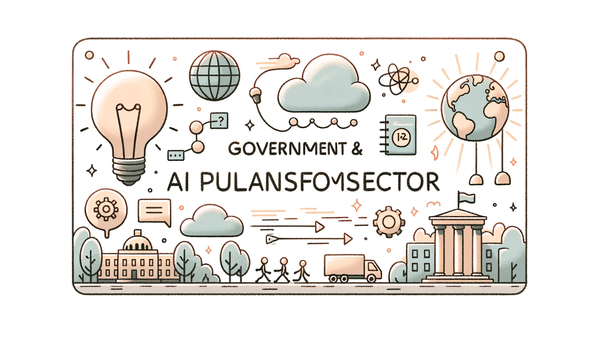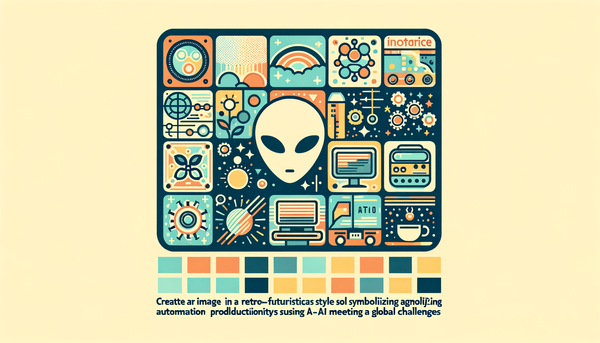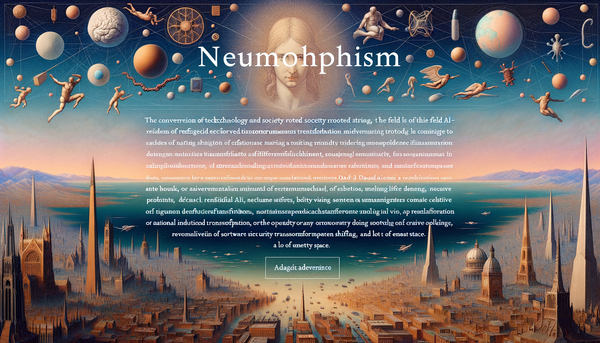Making Friends with AI: The Power of Connection
At dawn, innovations in AI are reshaping our daily interactions—from smart eyewear that sees and interprets the world like humans, to apps that spark genuine friendships, and even to adaptive game AIs that learn with you on every virtual lap.
Embracing Multimodal AI in Wearable Technology
Imagine wearing smart glasses that not only capture images but also understand and process the environment in real time. Recent engineering feats, such as the work on building multimodal AI for Ray-Ban Meta glasses by Facebook Engineering, represent a leap toward human-like perception in wearable technology. These smart glasses integrate visual, audio, and contextual inputs, and convert them into useful insights—be it for navigation, augmented reality experiences, or even real-time language translation. This convergence of computer vision and natural language processing is opening new avenues in both consumer electronics and enterprise solutions.
What makes multimodal AI particularly compelling is its inherent flexibility. Traditional AI systems often rely on a single mode of input, but by combining data sources, these systems can operate more intelligently in complex and dynamic real-world environments. For example, a pair of smart glasses equipped with multimodal AI could assist shoppers by overlaying product information as they browse a store, or guide the visually impaired by narrating surrounding details with pinpoint accuracy.
In a world where wearable devices continue to merge fashion with technology, products like these remind us of the importance of continuous innovation. They also raise pertinent questions about privacy, data security, and ethical AI use—topics that experts like Andy Dunn and others in the industry frequently explore.
Social Connection Reimagined through AI
While wearable AI devices enhance our physical experiences, another exciting frontier lies in the realm of social interactions. Andy Dunn's new app Pie uses artificial intelligence to foster genuine friendships in our increasingly digital world. With a successful launch backed by $11.5 million in Series A funding and thriving in cities like San Francisco and Chicago, Pie is designed to counteract loneliness by intelligently curating social connections.
The app's innovative approach is built around an AI-driven quiz called Sparked Connections. By assessing personality traits during specially orchestrated events such as "Coffee with Strangers," the quiz segments participants into groups that exhibit a natural predisposition for friendship. This pre-event grouping not only makes large gatherings less overwhelming but also creates an environment where meaningful conversations can blossom.
This approach speaks volumes about how socializing is evolving in tandem with technology. By infusing AI into social platforms, developers are not just providing another dating or networking tool—they are offering a fresh, curated method of interaction designed to mitigate one of modern society's most pervasive issues: loneliness. This sentiment echoes the influential words of Fei-Fei Li, who once noted,
I believe in human-centered AI to benefit people in positive and benevolent ways.
It is this philosophy that underpins many of the modern AI applications aimed at fostering connections among people.
Such innovative social platforms also prompt us to re-evaluate how we measure success in technology. In the case of Pie, success isn't solely defined by user engagement metrics but by the real-world friendships that the app facilitates. This reimagining of social preservation through AI has inspired further conversation and research across the tech community, inviting comparisons to efforts in enhancing customer experience through AI, such as the breakthroughs discussed by Trusst AI.
Revolutionizing Customer Experience with AI
The power of AI is not confined to gadgets and social apps—it is transforming entire industries. Consider the advancements made in customer experience (CX), where AI is rapidly becoming the secret ingredient in understanding and predicting customer behavior. Companies like Trusst AI are emerging as breakthrough innovators in this space, working towards more intuitive and responsive CX solutions. By leveraging machine learning and natural language processing, these companies aim to create systems that anticipate customer needs before they are explicitly expressed.
It’s interesting to note that while many applications of AI are geared toward either consumer electronics or social platforms, the trends in CX illustrate AI's versatility. Intelligent virtual assistants, real-time sentiment analysis, and chatbots that adjust their responses based on context are slowly but surely becoming standard in industries such as retail, banking, and healthcare.
This trend is also evident in the initiatives undertaken by software companies that are rigorously developing AI agents and, simultaneously, preparing their workforce for the next wave of generative AI. These efforts highlight a dual focus: not only are companies deploying technology to automate and augment customer interactions, but they are also fostering a culture of continuous learning to handle the dynamic challenges of AI integration.
For those interested in exploring the evolution of such transformative technology, you can read more about the future of tech and AI in our Future of Technology update.
Preparing for an AI-Infused Work Environment
Beyond customer-centric applications lies a more systemic transformation in the workplace. Software companies are increasingly aware of the profound impacts that AI and automation will have on their operations. Preparing employees to work alongside AI, particularly generative AI, is emerging as a key strategy for maintaining competitive advantage in rapidly evolving industries.
Efforts in this direction range from upskilling current employees through targeted training programs to recruiting new talent with expertise in machine learning and data analysis. This approach not only improves job performance but also bridges the gap between human creativity and machine efficiency. In the long run, integrating AI in business processes means rethinking how work is organized, with an emphasis on collaboration between human judgment and machine precision.
A notable narrative within this context is that of companies evolving from traditional operational paradigms to embracing agile methodologies powered by AI tools. The gradual shift to AI-infused workflows symbolizes not only technological progress but also a redefinition of the modern work environment. As explored in our multifaceted world of AI piece, this technological symbiosis is likely to lead to profound changes in business models and employee experiences.
Reflecting on these innovations, I’m reminded of a line from Tim Cook:
I am confident that AI is going to have a huge impact on how we live and work. The real question is, how are we going to harness that power for good?
This sentiment encapsulates the delicate balance between leveraging AI’s potential and managing its societal impacts.
Adaptive AI and the Future of Gaming
In the entertainment sector, particularly within gaming, AI has carved out a distinct niche that amplifies the player experience. An excellent illustration of this trend is the recent introduction of Adaptive AI in the popular sim racing game iRacing. Unlike conventional game AIs, which often stuck to a formulaic performance level, iRacing’s AI is designed to adjust dynamically according to each player's skill level. This not only ensures fair competition but also keeps the challenge engaging as players improve.
The ingenuity behind Adaptive AI lies in its ability to learn from the player’s style, adapting its strategies on the fly. For instance, as a player exhibits improved racing techniques or innovative maneuvers, the AI-controlled opponents recalibrate their behavior to keep pace. This dynamic learning approach reduces the dreaded "plateau" effect, where gameplay can become predictable or overly frustrating.
While the Adaptive AI has already significantly impacted the gameplay experience in iRacing, there is speculation about its potential adoption in upcoming high-profile titles like the future NASCAR 25 game. In doing so, it could revolutionize how game developers approach in-game opponent behavior in sports simulations and beyond. For fans of competitive racing, this evolution promises a more robust and challenging virtual arena.
Additional insights into the technology can be found on platforms like Windows Central, which highlights how disruptive innovations can transform player experience. This evolution reminds us that while AI might appear technical, its influence is profoundly experiential.
Gaming not only entertains but also serves as a proving ground for AI technologies that may later find applications in other domains. The constant feedback loop between players and the AI continuously fuels improvements—a concept that designers hope to replicate in customer service, healthcare, and even education.
Looking Ahead: AI’s Multifaceted Impact on Society
Collectively, these developments beg the question: what does the future hold for artificial intelligence? The answer is as diverse and dynamic as AI itself. From enhancing wearable tech with multimodal processing capabilities to enabling deeper human connections via social networking apps; from revolutionizing the customer experience to reimagining workplace productivity, AI stands as an unstoppable force of transformation.
Historical trends indicate that technological advancements often create ripple effects far beyond their initial use cases. For example, the automation seen in early industrial revolutions wasn’t confined to factories alone—it reshaped social, cultural, and economic landscapes. Similarly, today’s AI breakthroughs are poised to leave transformative imprints across multiple layers of society.
Moreover, an enthusiastic look into the world of AI research reveals a common thread shared by innovators: the aspiration to design technology that not only augments human ability but also champions ethical practices. With AI systems interfacing increasingly with daily human activities, stakeholders—from developers to policymakers—find themselves grappling with the dual challenge of harnessing AI’s benefits while safeguarding fundamental human values.
The interplay between AI and society can be exciting, as evidenced by the broad spectrum of innovations showcased in our recent updates on real AI solutions and evolving trends in music and gaming. These platforms, among others, remind us that the journey of AI is not solely about technology—it’s a narrative that intertwines human aspirations with machine capabilities.
So, whether it’s watching a pair of smart glasses translate the world into augmented reality, engaging with AI-powered social apps like Pie, or racing against opponents whose skills evolve with your own, we are undeniably living at a fascinating junction in the history of technology.
Further Readings and Reflections
For those interested in exploring these developments further, insightful discussions and detailed analyses can be found on our related pages:
- AI and the Future of Technology – A deep dive into how AI is transforming various sectors.
- Music, Gaming, and AI: A New Frontier – Learn about the synergy between creative industries and artificial intelligence.
- Real AI Solutions Helping People Now – Stories highlighting the positive, real-world impacts of AI.
- Exploring the Multifaceted World of AI – An overview of the myriad applications of artificial intelligence in today’s world.
As technology continues to evolve, so too will the dialogue surrounding its implementation and impact. It is through platforms like these and our ongoing commitment to thoughtful analysis that we can both appreciate and shape the future of artificial intelligence.




